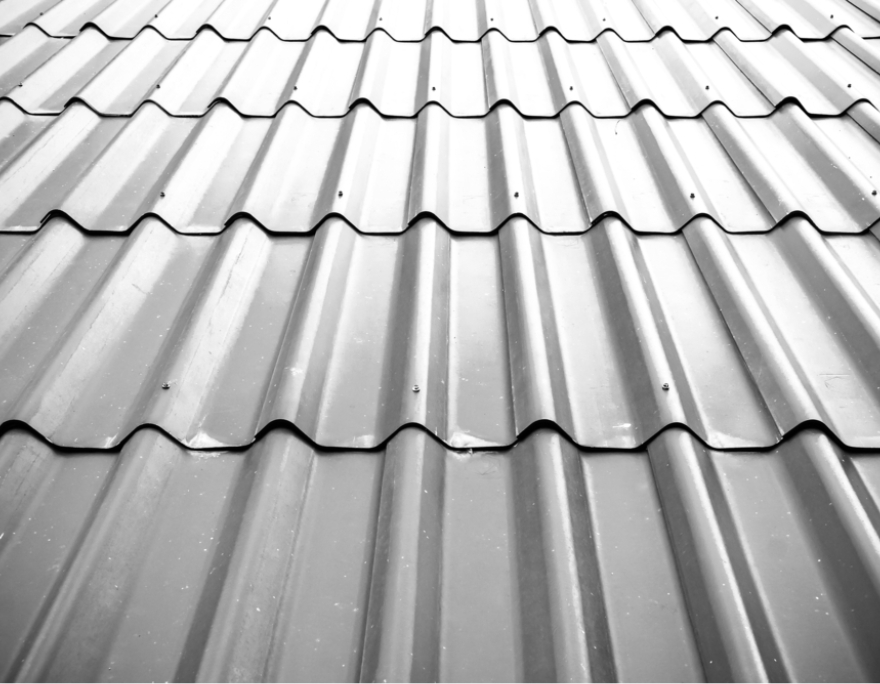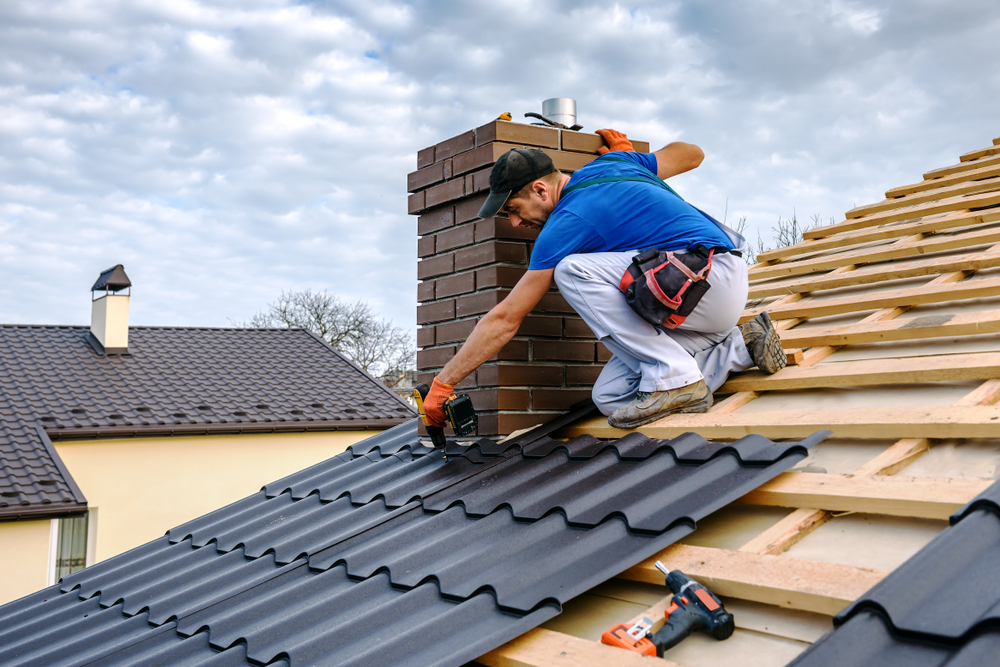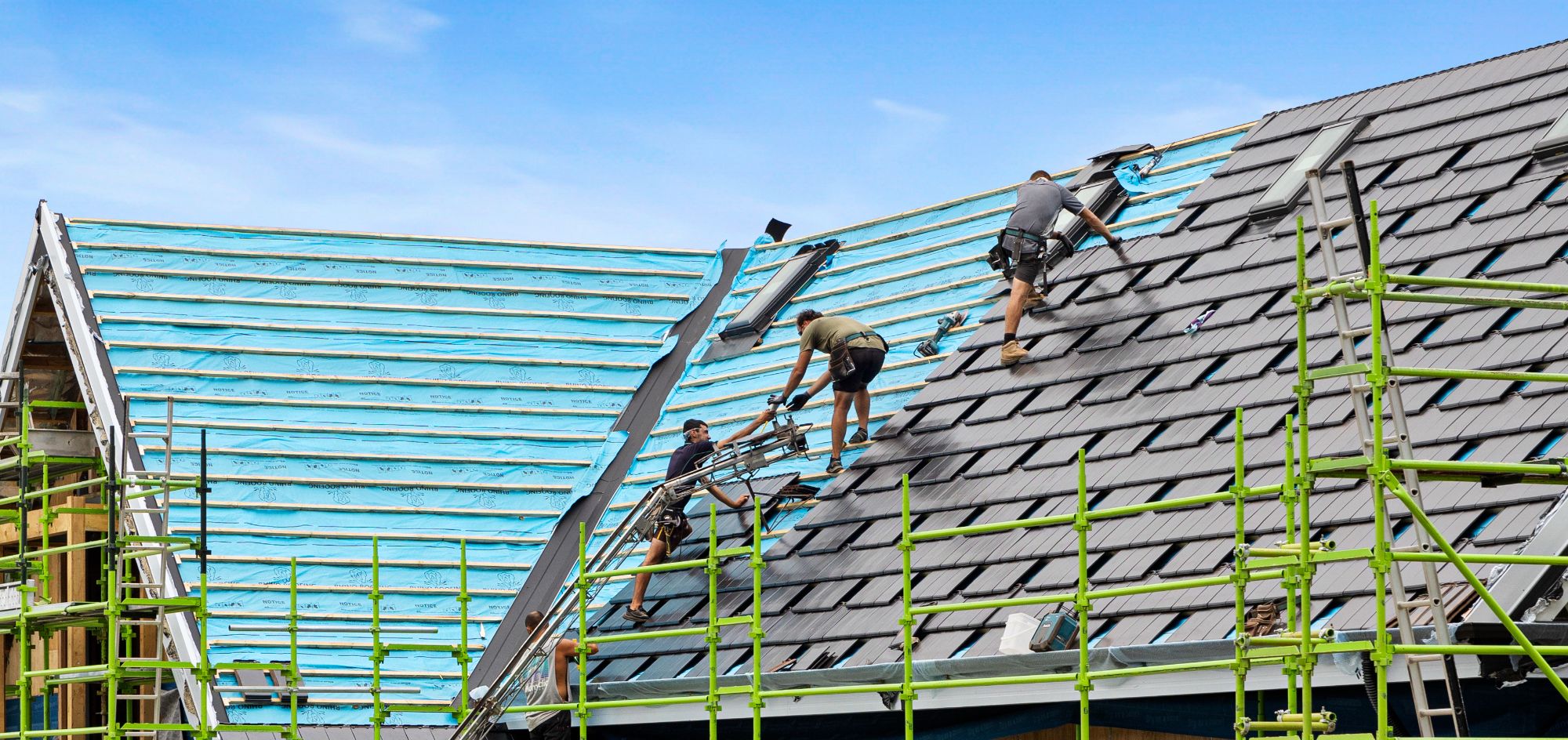
The roofing materials you choose can make or break a property’s aesthetic. According to this report by Statistica, the most common roof material used in building construction is metal, which accounts for approximately 42% of roofs installed in Australia.
Whether you're planning to rework your home, researching materials, or building your first home, it's important to look at the pros and cons of each material. This blog will guide you on what will work for your home, the advantages and disadvantages of different roofing types, and why it's worth taking a closer look before committing to an installation.
After all, having a comprehensive understanding can save you money, time, and repairs in the long term.

There are many reasons to think about roofing materials carefully. Let’s take a look at why you might consider a new roof!
Your roof is your first defence against high winds, heavy rain, hailstones, and sunlight. Neglecting your roof system, therefore, may ruin your home's structural integrity and lead to expensive repairs from water or ice damage.
For example, roofing materials such as asphalt, slate, shingles, tile, and metal can all offer excellent protection with the right care and maintenance.
Believe it or not, the material you choose for your roof, such as metal and clay tiles, also keeps your home well-insulated. Cutting back heating and cooling costs is especially important if you live in an area with fluctuating temperatures.
By selecting a roofing material with natural insulating properties, your family can stay warm during winter and cooler in the summer, all while helping to cut down on utility bills.
A beautiful roof adds value to your home or commercial building, so your property will be substantially more attractive to potential buyers if you decide to sell.
Stylish and popular materials are clay tiles, slate tiles, or COLORBOND® steel roofing.
Let's look at common roofing materials, what may suit your home, and how they can protect your interior and exterior from wild weather.
Made from clay, slate or concrete tiles laid in overlapping rows, tile roofing is available in various shapes and colours, so it's a great choice if you're aiming for an older-style home. Available in flat, curved, or barrel-shaped, tile can be customised, and the most common type of tile is asphalt shingles.
Tile roofs are also resistant to rot, insects, and fire, so you don't need to worry about pests or fire.
Affordable, weather-resistant, and versatile, asphalt shingles are one of the most common roofing materials, and there are three basic types: regular, 3-tab, architectural, and designer shingles.
Regular asphalt shingles have three regularly spaced tabs for a uniform look. On the other hand, 3-tab shingles are thin and aren't the best choice for extreme weather.
Instead of petroleum-based asphalt used in construction, roofing asphalt is processed differently to create a tougher material. Shingles also contain fibreglass that is covered with mineral granules for UV protection.
Terracotta tiles are another popular material, a classic red used in construction for decades. Meaning 'baked earth' in Italian, terracotta describes the material origin as natural clay, the natural density a good fit for most homes as they can even out temperature changes.
This tiling material is a good choice to reduce outside noise if your home is near a busy road or airport! Tiles can break and wear over time, so it's important to conduct inspections for cracks.
For some tile roofs, cement can be the main material. Finished with a roof sealant and hardening in the Australian sun, this tiling option strengthens with age.
Produced in many styles and shapes to mimic other roofs, cement tiles are amazing for temperature control and energy consumption.
Although slate roofing is often gorgeous, it is more fragile and requires more maintenance than other materials. A skilled roofer needs to ensure these tiles are installed correctly.
Additionally, slate is imported and isn't environmentally friendly, so it may not be the best option.
Environmentally friendly and biodegradable, wood shingles are timber cut into 10-14mm thick small boards. Installed by nailing them over a plywood substrate, they are coated with wood oil.
Most of the roof structure is made from the plywood beneath with timber as a finishing material, although it isn't a long-lasting or recommended material.
Made of steel, aluminium, or zinc, this roofing material is arguably the most durable option. Lightweight and simple to install in many styles, such as corrugated or cleaner aesthetic lines, metal roofing has a lifespan of up to 70 years. Metal roofing is popular for commercial and residential properties and is relatively affordable compared to other types of roofing.
Metal materials such as aluminium are lightweight, corrosive-resistant, and can handle up to 140 mph winds. Zinc is a long-lasting, eco-friendly option, and steel is strong and rust-resistant but requires a professional installer to prevent structural damage.
Galvanised steel has a protective layer of zinc to extend its life. Stainless steel is highly durable but can be expensive.
Reflecting heat in hot weather and retaining heat when cold, you can expect a better energy bill with a metal roofing material! Metal roofs can handle extreme weather conditions such as heavy hail stones or powerful winds. Additionally, it is also recyclable and an environmentally-friendly option for your home.
As a metal roof covered with a steel roofing sheet less than 1mm thick, COLORBOND® steel is coated in galvanised iron or ZINCALUME® steel, an alloy of aluminium, zinc, and magnesium.
With flat metal and corrugated iron styles available, metal roofing has many advantages, such as being lightweight, easy to handle, fast to install, and last decades with minimum maintenance.If you want to learn more about steel roofing, check out how to keep your COLORBOND® steel gutters in good condition.
Like structural insulated panels, insulated roofing materials contain two sheets of painted metal, like COLORBOND® steel, bonded to each side of an insulating foam block.
Lightweight, strong, and simple to install, SIPs are better suited to flat or skillion roofs and don't need to be maintained often. They also provide quality insulation from noise in busy areas.Needing support for a structural design? Xclusive Roofing provides roofing restoration to Narre Warren , Dandenong, Beaconsfield, and surrounding properties across Melbourne.
Certain roof types are better suited to different climates and conditions, but what are the most common roof types you may encounter?
Although many modern homes are constructed with flat roofs, this roofing type is structurally safe, easy to build, and provides an aesthetically pleasing, minimalist look.
Flat roofs also have a small surface area, so needing fewer materials makes them more economical for construction. High-rise buildings, apartment blocks, and some modern houses may use this roof type, although some are not flat and have a small pitch for water run-off!
With a triangular shape, a gabled roof connects at a top point, allowing space for an attic in a family home.
Gabled roofs are often tiled and are also called peak roofs, which are effective to install and easy to maintain.
Like flat roofing, a skillion roof has more obviously pitched planes for water and debris with a single-sloping roof surface.
This roofing type is commonly used as an extension attached to an existing roof, a great option for multi-level homes. When compared to a flat roof, this type is easier to maintain.
With two roof panels angled against each other, butterfly roofing angles upward like wings.
A box gutter is placed down the centre of the two roof planes for water run-off, removing the need for a traditional guttering system or a downspout! A butterfly roof is a stylish addition to modern homes.
Hipped roofing has three or more sides that slope downward from a ridge at the top. Almost triangular, a hipped roof doesn't have a precise point.
As a popular choice for Australian homes, this roof is excellent for windy or coastal areas since they are strong, look attractive, and provide shade.Have you been looking for efficient roofing professionals to repair your existing roof? Xclusive Roofing assists in roof repairs for Bayswater, Caulfield, St Kilda, and surrounding properties across Melbourne.
Every roof design depends on roof style, materials used, and whether you work on a commercial or residential building, but what are the ideal materials for your home? Many factors will impact your decision, such as:
Whether you need a roof repaired due to storm damage, the environment, or age, Xclusive Roofing is here to keep your property in the best possible condition.
Helping you with extensions and roof replacements, gutter replacements, custom made flashings, or downpipes, our family-owned business is a Boral tile roof distributor, can assist with after-hours emergencies, and performs tasks with precision and care.
Visit our yard in Clyde North or contact us today for an obligation-free repair or restoration quote!

Discover top-quality expertise. Satisfaction guaranteed!